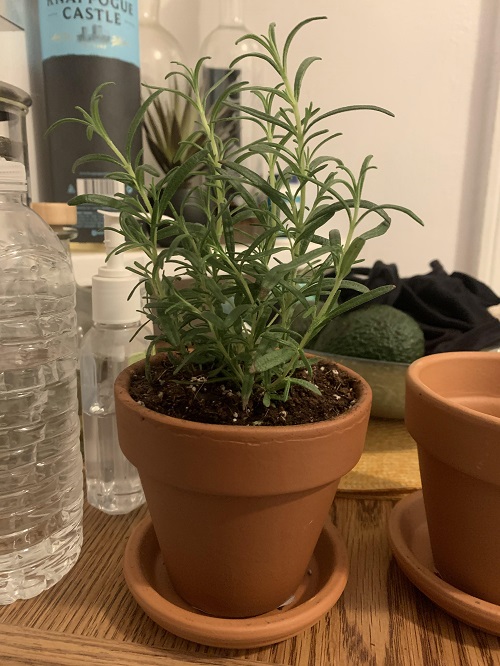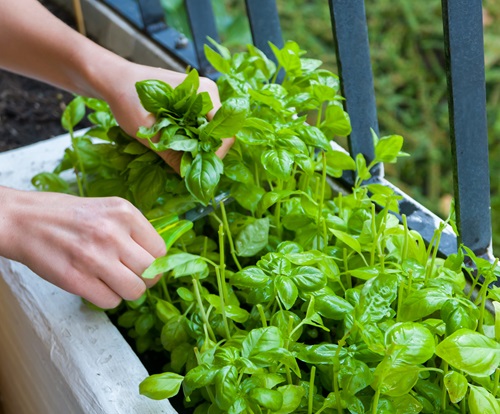Start Your Own Pizza Garden! Plant these herbs this fall and winter for garden-fresh flavors, groceries, and pizzas all year round in your home!
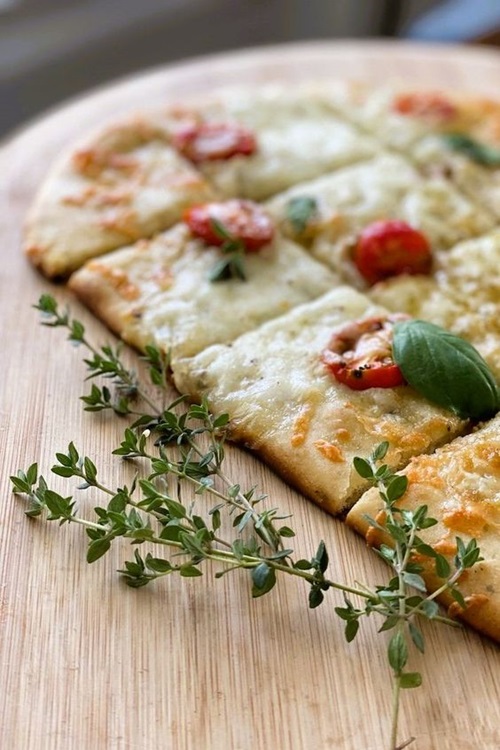
The scent of parched autumn leaves mingling with the savory aroma of a fresh, hot, homemade pizza baking in your backyard oven—isn’t it divine? We’ll show you how to start a pizza herb garden indoors this fall for year-round flavor, foodgasms, and garden-fresh pizzas!
Best Herbs for Your Pizza Garden Indoors
1. Basil
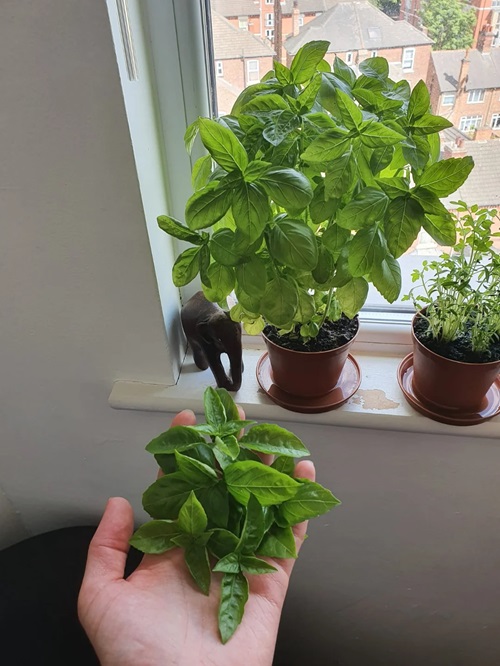
This one’s a classic! Start your own pizza herb garden with the universal basil. This herb grows best in mild temperatures and will thrive indoors if you sow seeds in the fall or just get a couple of healthy plants from a nearby store.
Place it by a south or west-facing window with abundant sunshine, and remember to pinch off its flowers. This will prevent it from bolting and boost its sweet, cool flavor.
2. Oregano
With its earthy flavor, this Mediterranean herb takes your homemade pizzas to perfection! A robust pizza sauce with tomatoes from your garden paired with oregano is surely a match made in heaven.
This edible herb can survive colder months easily indoors if you provide enough day light and occasional watering.
3. Thyme
Thyme needs a sunny spot with at least six hours of bright light daily, making it a perfect herb for indoor windowsills during fall and winter. It is a compact herb best suited for small indoor spaces.
Since thyme has such an intense, deep flavor, it pairs well with mushroom pizzas and a host of other classic Italian dishes. And it’s super easy to grow!
4. Rosemary
Rosemary is an evergreen herb with needle-like leaves and a strong piney fragrance. It thrives in warm, sunny spots indoors during fall and winter, but remember to protect it from cold drafts.
Once your potted kitchen herb flourishes, try this mouthwatering rosemary garlic pizza bianco recipe!
5. Parsley
Parsley has pungent-flavored leaves rich in vitamin C, A, and iron. Especially in winter, when other greens perish or go dormant, it is perfect for adding freshness to pizza toppings. You can even make a parsley drizzle as an alternative to pesto sauce.
6. Chives
For creamy garlicky richness in your pizza garden, nothing beats chives! These grow well indoors during fall and winter, and their grassy leaves look pretty swell in indoor herb gardens.
They’re easy to grow on windowsills and lend ample warmth and richness to winter meals.
Easy Tips for Indoor Pizza Garden
Now that we’ve zeroed in on the best herbs to start your pizza garden this fall let’s explore the how, what, and why. Is it really fresh if you haven’t picked it straight from your indoor herb garden?
1. Right Pot Size for Pizza Herbs
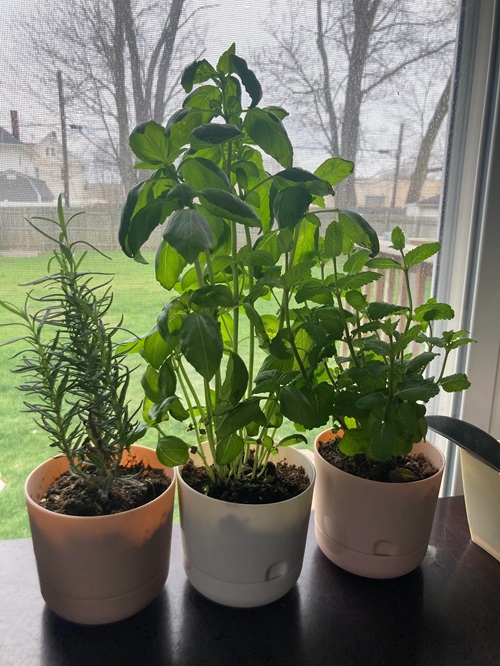
The pot size you choose for your indoor herbs depends on your plant’s growth habits, roots, and preferences.
A 6-inch pot is usually ideal for most herb transplants, as plants won’t grow too big indoors. For larger or bushier herb plants like basil or rosemary, use 8-inch pots.
But make sure the pot is not oversized and keeps your herbs slightly rootbound.
We suggest terra cotta and clay pots for indoor winters as they provide stability and allow for proper air circulation through the roots.
Plastic pots are also a durable and lightweight option, especially if you need to move your herbs around to capture sunlight.
2. Well-Draining Potting Mix is a Must
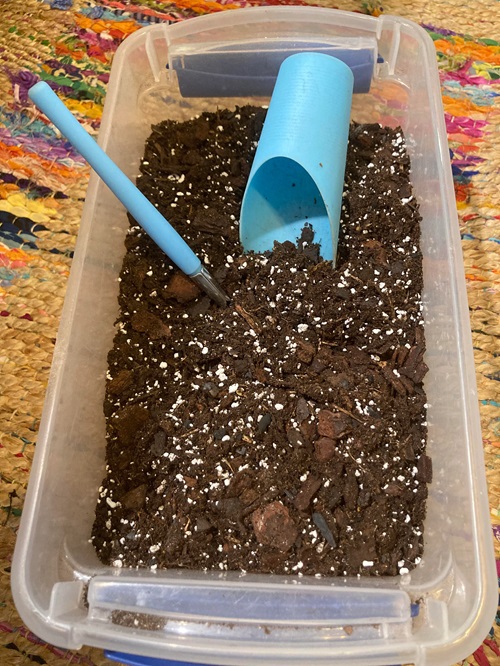
A simple potting mix that works for vegetables is also best for herbs. Make your potting mix by amending the medium with equal parts of perlite or coarse sand. This soil ensures good drainage, which is crucial in winter as the water dries up slowly.
Remember that herbs thrive in slightly acidic to neutral soil pH of around 6.0 to 7.0. If you want a healthy herb harvest, add organic matter like compost. Dense mediums like 100 percent garden soils are not a good fit for herbs, as they need aeration.
3. Pizza Herbs Need Bright Sunshine

As winter looms, sunshine depletes. Place your potted pizza herbs by a south-facing windowsill to ensure 6-8 hours of light. But prepare to offer them afternoon shade and diffused light via sheer curtains, especially if the sunlight is too harsh or direct.
Living in a warm region, you can still place your pots on a balcony during the cooler fall months. However, keeping them indoors in colder areas will protect them from frost and low temperatures.
4. Water Moderately
Your herbs need less water indoors, and in the cooler months of fall and winter, the requirement is even lesser.
Overwatering is a common mistake during these months when the soil takes longer to dry. Water only when the topsoil is dry to the touch.
The best time to water your herbs is in the morning to allow the plant to absorb moisture before sunshine. Water once a week during peak winter.
5. Harvest Them Correctly
The best time to harvest your herbs again depends on the plant. But you don’t have to worry much about it in your small Pizza herb garden.
Just follow the cut and come again method, harvest a few sprigs or leaves whenever you need, and read these herb harvesting tips. Cutting back herbs also encourages new growth and will secure an endless supply!
It is best to pick them before they start flowering. This is the time when their flavorful oils are at their peak.
6. Avoid Overfertilizing Edible Herbs
Herbs are not heavy feeders; overfertilizing them will affect their flavor and aroma. Pick any organic balanced liquid fertilizer and feed them once a month in low strength.
Pull back on fertilizing your herbs in winter or simply fertilizer after a couple of months. This is vital in preventing excess growth that your plant may not be able to sustain indoors.



